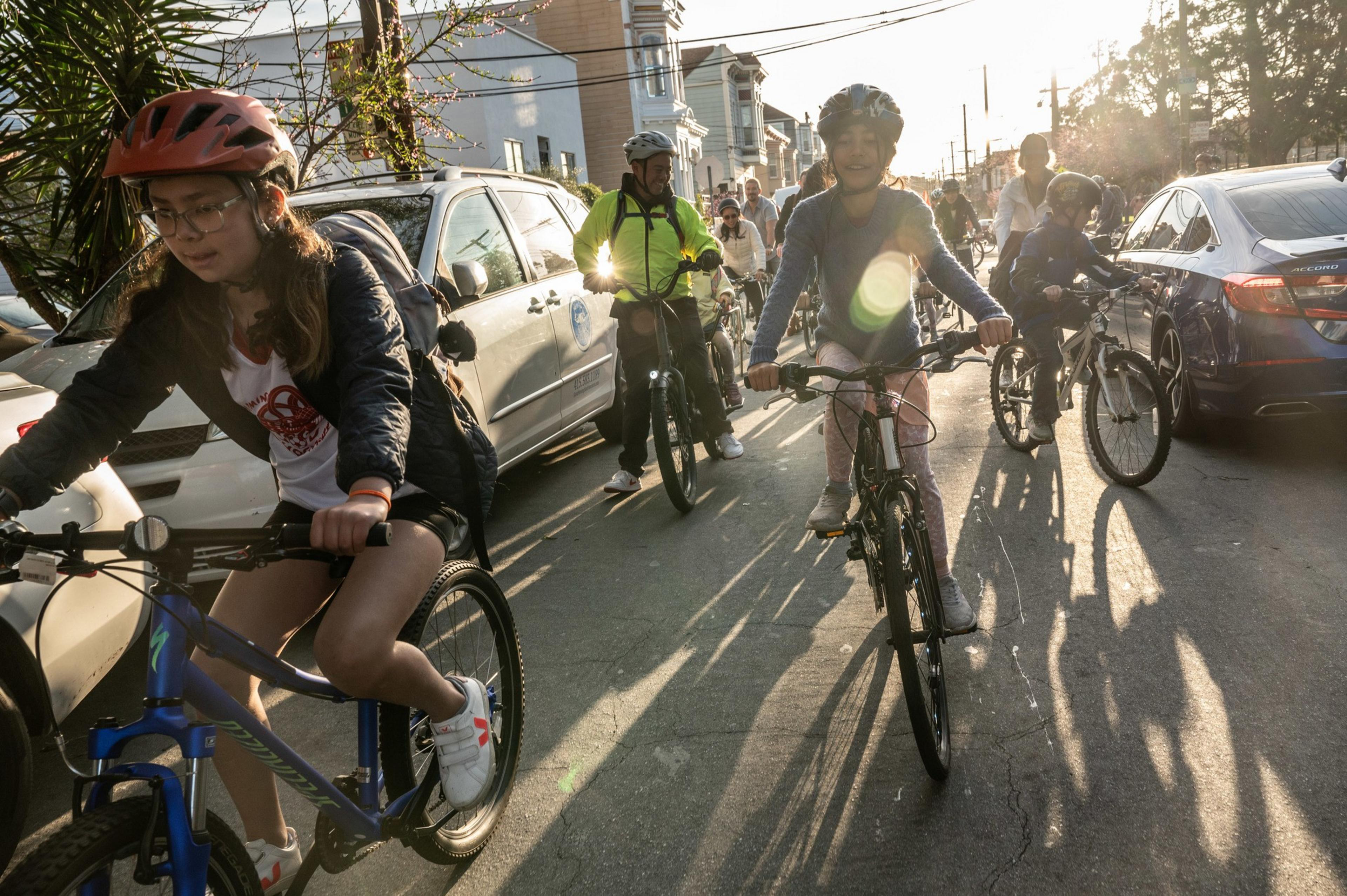When my sons were 4 and 5, we moved from Marin to San Francisco. Our friends scratched their heads: Don’t most people leave SF for the suburbs when their kids enter school age?
But we believed back then, as we do now, that the best thing for our kids’ health was to live in a city where they could move around independently. Now that the boys are teenagers who confidently navigate San Francisco by bike and Muni, it’s clear we made the right choice.
As a mom, I’m intimately aware of the mental health crises facing teens. Nearly 4 in 10 American adolescents struggle with persistent sadness and hopelessness. An increasing body of evidence (opens in new tab) points to a lack of independence as a main cause, as children are afforded less freedom to get around without supervision than young people just a generation ago.
Most San Francisco children don’t travel alone because of parents’ persistent, low-level anxiety about kids getting hit by cars. It’s not unfounded. Over the past two decades, an average of 30 people per year (opens in new tab) have been killed in traffic crashes in the city, and more than 2,000 are injured (opens in new tab). An entire family was killed this year in West Portal while waiting at a bus stop that’s often crowded with kids commuting to school.
Wanting to be proactive in supporting our boys’ mental well-being, I sought advice from health professionals when we moved to the city. They recommended providing the kids with a sense of agency over their schedules, along with opportunities to exercise their independence. We decided that biking to school would not only give our kids independence but would ensure they got some physical exercise — a win-win.
We began by biking to school with them. It was nerve-racking to ride behind our wiggly, energetic 4- and 5-year-olds on unprotected painted bike lanes, with cars impatiently zooming past. A single wrong move or the unexpected opening of a car door could have spelled disaster. We breathed a sigh of relief after each trip ended safely.
When the youngest was 8, we transitioned to letting them ride the three miles to and from school on their own. The boys were in heaven. They felt accomplished and trusted and were especially happy about stops at the candy store on the way home. This freedom allowed them to make choices — deciding routes, stopping points, and even whom to ride with — without adult input.
Despite lingering worries about cars, my partner and I were thrilled to escape the chaos of school traffic and pick-up lines. But the biggest change was in our boys. They no longer had to be dragged out of bed; they woke up early, excited to plan their routes and meet friends, arriving at school full of energy and ready to learn. The transformation was remarkable.
Living on a “slow street,” our kids and their neighborhood friends had a relatively safe route to bike to school. But most kids in San Francisco don’t have this luxury. This is in part why more than half of SF Unified School District’s K-5 students are driven to school, even though caregivers find the commute “stressful.” (opens in new tab) Shockingly, more than 72% of these students live within two miles of school (opens in new tab), a distance that’s easily bikeable — and for some, even walkable.
According to the San Francisco County Transportation Authority’s May 2023 School Access Plan (opens in new tab), many caregivers report that there isn’t enough protected bicycle infrastructure to make even e-bikes a safe or reliable transportation option for kids.
Slow streets, established in 2022 (opens in new tab), opened a low-cost way for the city to quickly create routes safe enough for kids to walk or bike independently. Yet two years later, there are only 19 streets in the program. Moreover, some of these streets are not kept in compliance due to complaints from drivers wanting faster commutes. Drivers push back whenever the Municipal Transportation Agency proposes adding infrastructure to maintain the safety of slow streets.
Such lobbying comes at everyone’s expense, since having fewer children walking and biking to school only adds cars to our roads. And while the city has made progress with 45 miles of protected bike lanes, much of that infrastructure consists of outdated painted lines, putting people on bikes right next to parked and moving cars.
Designing our city around cars is particularly damaging for San Francisco’s 175,000 kids and young adults (opens in new tab). Their needs are often overlooked, and they would be much better served by options that enable them to move around independently, yet safely. A connected network of quality bike lanes, slow streets, and safe intersections are good places to start.
San Francisco, like many cities, faces a critical decision: Will we continue to prioritize cars at the expense of our youth’s freedom to explore and grow independently? This sense of freedom shouldn’t be a privilege limited to a few; it should be a cornerstone of urban planning, one that will lead to a healthier, happier, and more vibrant city for everyone.
Trish Gump is a San Francisco mother of two teenagers and a volunteer with KidSafe SF, an advocacy group pushing for safer streets.
